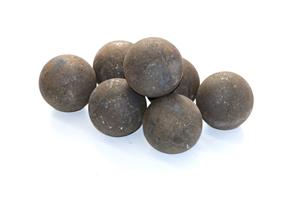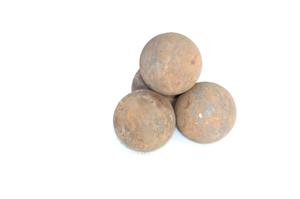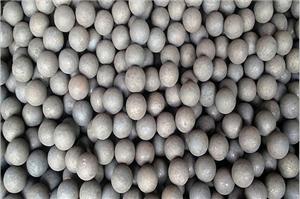5 Ways To Improve Grinding Efficiency Of Ball Mills
Several factors affect the efficiency of a ball mill for cement grinding. In this article, we shall be looking at some of these factors that have been proven to influence grinding efficiency when the grinding balls into the ball mill .
Mill Geometry And Speed
According to Bond (1954), the grinding efficiency of a mill depends on the ball mill diameter, size of the grinding balls and mill speed. Ball mills with different length to diameter ratios for a particular power rating will produce different material retention times. The longer units are used for high retention ratios while shorter units are used where overgrinding is a factor to be considered.
Closely related to grinding media and material retention is the discharge arrangement. According to Mokken (1978), the faster the pulp is removed, the better. This is evidenced by the evolution trend from grates with pulp lifters, to peripheral and eventually to open discharge design.
Feed Preparation
With increasing popularity in the use of coarse ball milling, it is becoming increasingly critical to offer an appropriate feed material top-size to the mill. A considerable amount of inefficiencies are introduced due to the need for bigger (and thus fewer) grinding balls. Also, because ball mill performance is closely related to complete size distribution of the feed materials, all the previous stages of classification and grinding the materials into smaller sizes which would eventually influence feed size distribution will ultimately affect the grinding efficiency of the ball mill.
Closed Circuit Grinding
Another factor that affects ball mill cement grinding efficiency and effectiveness as it relates to a specific material size distribution is the circulating load. It has been observed with increased circulating load and classifier efficiency; there is an increase in the grinding efficiency. When the circulating load is increased, it results in a reduction in overgrinding, and it offers the media a more effective size distribution with which to work on. However, at a point, diminishing returns would set in, and limitations would set in due to material handling and the classifying requirements.
Feed Composition
The feed of the ball mill, in most cases, is made up of several constituents, apart from the ore itself. The most common of these constituents is water which shows a wide spectrum of effects on the ball mill grinding process, based on the nature of the material itself and the number of solids in it.
In most cases, dry grinding may take up to 10-50% more power, compared to wet grinding. This is however offset by the severely reduced liner and media consumption. Addition of moisture without introducing heated gas can completely stop the grinding of fine materials. When more water is added, it carries it through this sticky phase to the standard wet grinding phase of 60-80% solids by weight.
At this point, optimum water content for efficient grinding would have been attained depending on the total effects of some prevailing conditions like pulp viscosity, physical design parameters of the mill, material transport characteristics, mill retention time and the internal friction and filling of the interstices of the charge.
Media Utilization
It is common practice to match the material size distribution and the most effective grinding media size distribution. This would involve the media top selection size and the graded grinding ball recharging as well. The principle applied here is that larger steel balls are suitable for coarse grinding while smaller grinding balls are suited for fine grinding. This same principle is applied in ball mill cement grinding either with the use of division head, classifying liners or ox.
Choosing grinding ball material is usually based on cost-effectiveness as regards material consumption. There are however reports that increase in the specific gravity and surface hardness had resulted in significant improvement in the use of grinding energy.
Control Technology
With just a few exceptions, a grinding circuit would contend with changes in the feed characteristics that would result in the prevalent operating conditions to consistently shift away from what is desired. As a result of the frequency of these digressions, the response time, as well as the reliability of the operator, automatic control systems, have been applied with reports indicating as much as 15% improvement in energy efficiency.
Broadly speaking, the mechanism of grinding in a ball mill can be classified into impact or attrition, with each type accounting for at least two forms of breakages. Impact breakage may be due to the particle being crushed between the balls or between a ball and the lining of the mill. It also includes slow compression fracturing or the crushing of the particle between grinding media balls.
Attrition grinding, on the other hand, includes surface removal of grains by a rubbing action, abrasion and chipping off of pieces by those forces which did not break the full particle. Attrition leads to the production of a smaller daughter particle as wells as the bigger parent particle.




